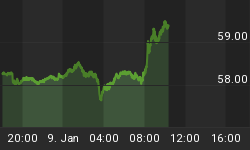The closely-watched smoothed growth rate of the ECRI Weekly Leading Index (WLI) is about to peak, indicating that the WLI is losing momentum. In previous articles I argued that the S&P 500 Index is the most important constituent of the ECRI WLI as evidenced in the graph below where my calculated smoothed growth rate of the S&P 500 is depicted against that of the ECRI WLI.

Sources: Dismal Scientist; I-Net Bridge; Plexus Asset Management.
Closer examination indicates that the S&P 500's smoothed annualised growth rate is rolling over.

Sources: Dismal Scientist; I-Net Bridge; Plexus Asset Management.
The yield on the U.S. 10-year government bond note is also a major constituent of the WLI. My calculated smoothed growth rate of the yield is depicted against that of the ECRI WLI.

Sources: Dismal Scientist; I-Net Bridge; Plexus Asset Management.
Closer examination also points to a roll-over of the smoothed annualised growth rate of the yield on the U.S. 10-year government bond note.

Sources: Dismal Scientist; I-Net Bridge; Plexus Asset Management.
Materials are a known constituent of the ECRI WLI. As a proxy for materials I used the smoothed annualised growth rate of the Economist Metals Index.

Sources: Dismal Scientist; I-Net Bridge; Plexus Asset Management.
The roll-over of the smoothed annualised growth rate echoes that of the S&P 500 Index and that of the yield on the 10-year bond note.

Sources: Dismal Scientist; I-Net Bridge; Plexus Asset Management.
To ascertain whether the recent pull-back in the S&P was not the reason behind the roll-over of the smoothed annualised growth rate, I looked at different scenarios to calculate the future smoothed annualised growth rate. The current level of the S&P 500 was assumed to be 1280 and I kept it constant at:
- 5% lower
- Unchanged
- 5% higher
- 10% higher

Sources: Dismal Scientist; I-Net Bridge; Plexus Asset Management.
It is interesting to note that the smoothed annualised growth rates have peaked in all cases except where the S&P 500 was assumed to be 10% higher. In the case of the latter, the growth rate is about to peak at the end of April this year. Another important observation is that in the case of the S&P 500 being 10% lower from the current levels, the Index's smoothed annualised growth rate will turn negative as early as the end of April this year! If the smoothed annualised growth rate of the ECRI WLI follows suit, it may indicate that the U.S. will find itself in a recession early next year given the historical average lead of 10 months at business cycle peaks.
With the two big black swans in the global pond - the MENA uprising and the great Tohoku earthquake - did the upward leg of the current business cycle come to an abrupt end? I have no doubt that the markets will lead the way answering that question.















